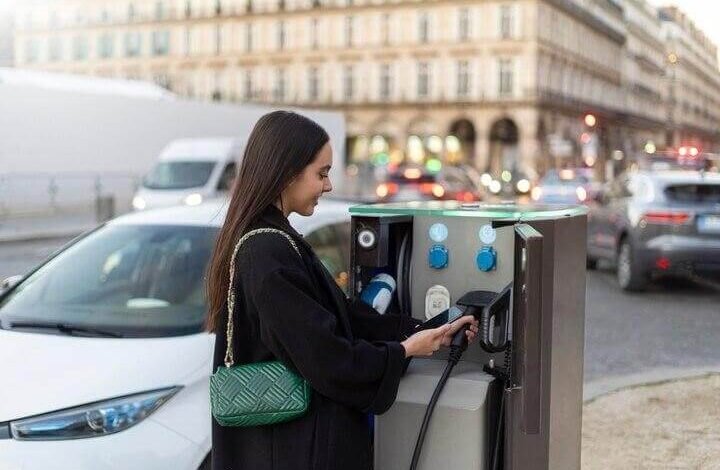How Fast Is Fast? Understanding Charging Speeds and What They Mean for You

Increased sales of electric vehicles (EVs) have added another dimension to the age-old debate concerning fast charging requirements of such vehicles, where EV charging is dependent on charger types, battery capacities, and other auxiliary factors, while in case of gasoline-powered vehicles, the refueling of which is measured in minutes. Hence knowing different kinds of charging speeds, how they can affect vehicle use, and which are suited for you is important for making an informed choice.
This article will explain all about EV charging speeds, how they define charging time, and what that means for your day-to-day life.
The Different Levels of Charging Explained
EV charging is categorized by three levels with output power and charging speed distinctions.
1. Level 1 Charging (Trickle Charging)
Power Output: 120 volts (standard household outlet)
Charging Speed: 3-5 miles of range per hour
Ideal For: Overnight home charging, hybrid vehicles, low-mileage drivers
Level 1 charging is the slowest method of charging, so it is colloquially called trickle charging. The charging equipment connects to a standard household outlet (120 volts) and gives approximately 3-5 miles of range per hour of charging. This can be convenient for hybrids or people who have only short daily commutes, but it is impractical in the case of long road trips or for people who often drive long distances.
2 Level 2 Charging (Faster Home & Public Charging)
Power Output: 240 volts (requires installation of a dedicated charger)
Charging Speed: 25-30 miles of range per hour
Ideal For: Home charging, Work charging, Charging stations
Level 2 chargers need to be connected to the 240-volt power outlet as is generally done for drying clothes and baking. These chargers are common in homes, workplaces, and public charging stations, and they provide quite a significant speed advantage over Level 1 chargers. With 25-30 miles of range gained per hour, charging is considered full overnight for most EVs, bringing comfort in day-to-day use for Level 2 charging.
3. DC Fast Charging (Ultra-Fast Public Charging)
Power Output: 50kW-350kW
Charging Speed: 100-250+ miles of range in 15-45 minutes
Ideal For: Long-distance road journeys, highway rest stops, commercial fleets
DC fast chargers (or level 3 chargers) are ones that charge rapidly by providing high-voltage power directly to the battery. These chargers replenish the battery of an EV from 20 to 80% in 15-45 minutes, depending on the charger and the vehicle’s capability. Nevertheless, not all EVs can utilize ultra-fast charging speed, and frequent using of DC fast charging may compromise battery health over a period of time.
Factors that Influence EV Charging Speed
Amongst all factors influencing charging speeds, charger type remains primary while many other miscellaneous reasons also affect charging duration.
1. Battery Capacity, State of Charge
Larger battery packs inherently take longer to charge than smaller ones even when fast chargers are applied. Moreover, as charging approaches completion, charging speed preparation slows-and this is designed to safeguard battery health.
2. Charging Infrastructure and Power Output
Not all Level 3 chargers share power outputs. A 50kW charger is much slower than one at 350kW. Thus, it is vital to comprehend what output will be available from the charging stations being considered.
3. Vehicle Compatibility
Every EV has a certain maximum charging speed that it could accept. If this happens to be limited to 100kW, this means charging at a 350kW charger will not make it any faster. Always refer to your car specs to identify an appropriate charger.
4. Climatic Condition
Charging speed is affected by climate, especially in cold weather, as batteries perform poorly at low temperature. Some EVs come equipped with battery pre-conditioning features that assist in optimizing charging capability during extreme weather conditions.
5. Charging Frequency and Habits
Frequent utilization of DC fast charging affects battery life development over time. Professionals recommend Level 2 charging for day-to-day use and fast charging only during long-distance travel.
How To Choose The Right EV Charger For Your Charging Needs
1. Home Charging
A Level 1 may do the trick if you only drive less than 40 miles a day.
If you want faster home charging, a Level 2 charger is the best long-term investment.
Check to be sure your home electrical panel supports a 240V charger, or consult an electrician.
2. Public Charging
Commuters should check that Level 2 chargers are found at their workplace and in shopping centers.
Long-distance DC fast chargers along the highway will ensure that downtime is kept to a minimum.
3. Businesses and Commercial Charging
Installing EV chargers at businesses attracts more customers, raises property values, and boosts sustainability projects.
Fleet operators consider fast chargers to keep their vehicles on the roads for minimal charging time.
The Future of EV Charging Speed
With improvements in battery and charging infrastructure, EV charging speed will thus increase. Some of the expected innovations include:
- Ultra-Fast Charging (500kW+ Chargers): Chargers in development that are expected to be able to cut charging time to less than 10 minutes.
- Wireless EV Charging: Inductive charging pads might be working away from physical cables and support ease of charging.
- Smart Charging Solutions: AI-based energy management systems will optimize charging schedules in accordance to electricity demand and pricing.
Conclusion
Now that you know the speeds at which electric vehicles charge, it will be easier to select the type of charging solution that suits your needs. You can consider Level 1, Level 2, or DC fast charging whether you will be charging at home or elsewhere-from work to on-the-go-rather than regretting your choice later.
Apex Charger has been through a lot to find you the best-reviewed EV chargers, so you can be sure that they will get your car charged and ready for the next trip.





